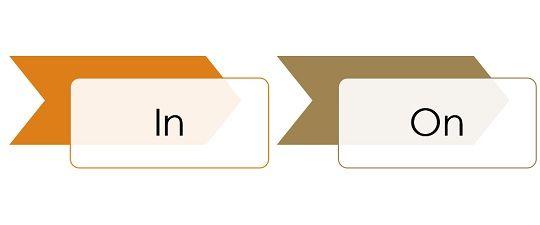Currently Empty: $0.00

Have you ever found yourself confused about when to use “on” and when to use “in” in your sentences? Don’t worry; you’re not alone! These two prepositions can be quite tricky, but fear not—we’re here to help you unravel the mystery of “on” vs. “in.” In this blog post, we’ll dive deep into the usage of these prepositions, provide examples, and answer some common questions to ensure you never mix them up again.
Table of Contents
Introduction
The English language is full of nuances that can trip up even the most seasoned writers and speakers. One of the areas where people often struggle is choosing between the prepositions “on” and “in.” While these two words may seem interchangeable in some contexts, they have distinct usages that can significantly impact the meaning of your sentences.
In this comprehensive guide, we’ll clarify when to use “on” and when to use “in” by breaking down their usage rules, providing examples, and sharing tips to help you make the right choice every time. Whether you’re a student looking to improve your grammar or a professional aiming for clear and effective communication, mastering “on” vs. “in” is a valuable skill.
Using “On” and “In” Correctly
When to Use “On”
- Surface: Use “on” when something is physically on a surface or touching it. For example, “The book is on the table.”
- Days and Dates: When referring to specific days of the week, use “on.” “I have a meeting on Monday.” When talking about dates, use “on” as well. “Her birthday is on June 15th.”
- Public Transportation: Use “on” for public transportation like buses, trains, and planes. “I’ll meet you on the bus.”
When to Use “In”
- Enclosed Space: Use “in” when something is within the boundaries of an enclosed space. “She is in the room.”
- Time Periods: “In” is used for time periods like seasons, months, and years. “They got married in December.”
- Larger Geographical Areas: When discussing larger geographical areas, countries, or regions, opt for “in.” “I live in the United States.”
Examples of “On” vs. “In”
Let’s explore some examples to illustrate the difference between “on” and “in.”
On:
- The cat is sitting on the roof.
- We’ll meet on Wednesday.
- Please place the book on the shelf.
- She spilled coffee on her dress.
In:
- The car keys are in the drawer.
- I love to swim in the summer.
- The conference will be held in Paris.
- He’s in the kitchen making dinner.
Common Mistakes to Avoid
Misusing “on” and “in” can lead to confusion in your writing and speech. Here are some common mistakes to watch out for:
- Using “on” instead of “in” for enclosed spaces: Incorrect: “I’m on the bathroom.” Correct: “I’m in the bathroom.”
- Using “in” instead of “on” for specific days: Incorrect: “We’ll meet in Monday.” Correct: “We’ll meet on Monday.”
- Confusing “in” with “at” for locations: Incorrect: “I live at New York.” Correct: “I live in New York.”
- Using “in” instead of “on” for surfaces: Incorrect: “The book is in the table.” Correct: “The book is on the table.”
Tips for Better Usage
To improve your “on” vs. “in” usage, consider these helpful tips:
- Practice with sentences: Create your own sentences using “on” and “in” to reinforce the correct usage.
- Visualize the context: Imagine the physical or temporal context of the sentence to determine which preposition fits best.
- Read and listen: Pay attention to how native speakers use these prepositions in context by reading books or listening to conversations.
- Use mnemonic devices: Create memory aids or associations to remember when to use “on” and when to use “in.”
Frequently Asked Questions
1. Is it always “on” for surfaces and “in” for enclosed spaces?
While “on” is typically used for surfaces and “in” for enclosed spaces, there are exceptions. For instance, you might say, “There’s a stain in the carpet” or “The fly is on the wall.” Context is key in determining the appropriate preposition.
2. Can “on” and “in” be used interchangeably in some cases?
In some cases, “on” and “in” can be used interchangeably without significantly altering the meaning of the sentence. For example, “I found it in/on the bookshelf.” However, it’s essential to understand the subtle differences to communicate more precisely.
3. Are there regional variations in the use of “on” vs. “in”?
Yes, there can be regional variations in how “on” and “in” are used. Different English-speaking regions may have unique preferences or colloquial expressions. It’s a good idea to pay attention to local usage if you’re in doubt.
Conclusion
Mastering the distinction between “on” and “in” is a valuable skill that can enhance your written and spoken English. By following the usage rules, practicing with sentences, and staying mindful of context, you can use these prepositions with confidence. Say goodbye to the confusion, and start expressing yourself clearly and accurately.
Keep in mind, the path to mastering a language is a continuous adventure, and embracing errors is an integral aspect of the learning process. Keep refining your skills, and soon you’ll be a pro at using “on” and “in” appropriately.
Happy learning, and remember: practice makes perfect!

